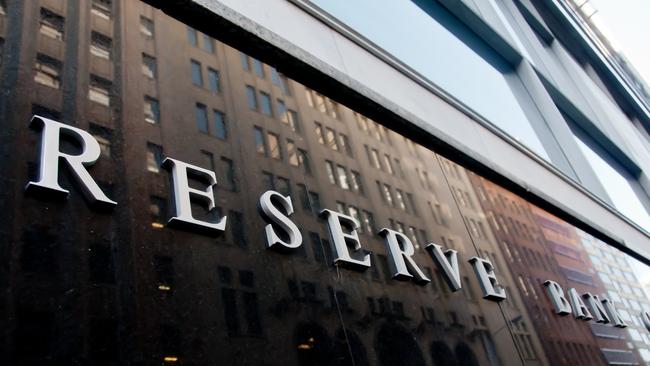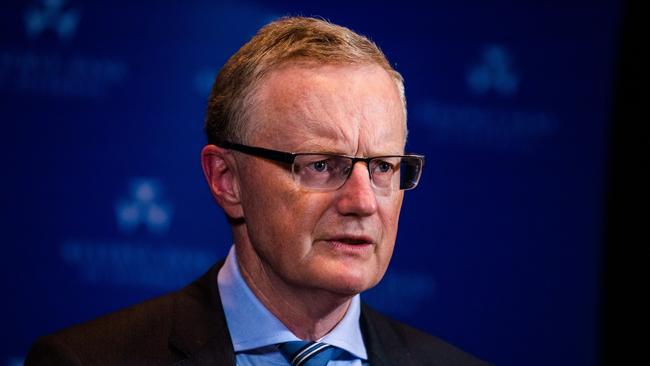US inflation spike to record levels means mortgage rates in Australia are almost certain to rise


Both our Reserve Bank and the US Federal Reserve have believed — perhaps hoped is a better word — that the inflationary pressures seen in recent months were temporary.
The latest spike in the US inflation rate has caused markets to trash the Federal Reserve view and US bond yields have jumped as a result of sharp falls in bond prices.
An important part of the funding of Australian banks is borrowing overseas at interest rates based on US bonds. The cost of those overseas borrowings has been rising in recent months and now it will rise even further.
Banks will want to pass that higher cost onto mortgage borrowers as well as business. Already banks have lifted their fixed rate long term home loans but the Australian housing market is dominated by flexible lending rates which have plummeted so boosting demand.
There will be anger in the community when mortgage holders begin paying higher interest rates because of overseas trends when the official rate has not moved.

The Reserve Bank wants to see wage rates increased before lifting its rates and is still hopeful inflation will not break out.
Along with others, I have been warning for some time that this is simply not a likely scenario because Australia is being plagued with a massive shortage of labour across many areas the country, which is pushing up wage rates. There are dangerous supply chain issues and the costs of goods out of China is rising.
What is holding wages back is the massive employment in supermarkets and other employment based on enterprise agreements that were set in difficult economic times. So far there has not been a mass exodus of supermarket staff to join the delights of the higher wage rates in other segments of the community but this is a relatively recent environment.
Will the higher interest rates create massive turbulence in the real estate market and bank bad debts? At this stage we are probably looking at an interest-rate increase during 2022 of around one per cent but that could rise further as the Australian inflation rate increases.
But building costs are also rising. Those with existing mortgages will see their house prices underpinned by ballooning construction costs of new premises. There will not be a mass bad debt problem while employment is so high and interstate rises are moderate.

Employed Australians pay their home mortgages first. In many families food comes next. However, the higher interest rates will curb bank credit availability which will take the sting out of the house price boom.
In the US, the Federal Reserve has been caught completely wrong footed. Its recent bond buying had pushed the 10 year bond rate well below the 1.5 per cent benchmark rate in the expectation that inflation would not break out in the latest announcements.
The Federal Reserve’s head was firmly cemented in the sand when the latest US inflation figures were announced. Accordingly the 10-year bond rate rose by more than one per cent to above 1.55 per cent and the 30 year bond rose a similar amount to exceed 1.9 per cent. Australia bond prices will now fall sharply boosting yields.
The US consumer price index, like Australia is a basket of products ranging from US gasoline and healthcare to groceries and rent. It rose by 6.2 per cent from a year ago hitting its highest level since December 1990. This is an incredibly high inflation rate and there is no sign of it abating. Indeed, the October monthly rise in the CPI it was 0.9 per cent which is an annual rate of above 10 per cent.
On the official interest rate front, October was another month of inflation data well above the Federal Reserve’s inflation target. If inflation doesn’t subside, the Federal Reserve will almost certainly need slash its bond buying and boost interest rates which will hit US shares and bonds.
Not surprisingly after the October data was released technology shares fell as rising rates discounted the value of future earnings which impacts the market price of growth stocks. On the other hand bank stocks got a lift from the jump in bond yields.
The market calculates that the higher rates will enable US banks charge greater interest on loans, which typically boosts profits. The same will happen in Australia as long as bad debts do not rise. On the other hand the higher rates in bonds cause yield driven shares to fall in value.
Meanwhile, all the warnings about the overheating of the US economy are now coming home with a vengeance. Exactly the same thing is happening in Australia, as like the Federal Reserve, our Reserve Bank continues to print money despite the boom.
Companies around the world are battling supply chain bottlenecks as demand increases converge with industrial enterprises struggling restore production after the Covid-induced shutdowns.
In China this has been exacerbated by power shortages partly as a result of the bans on Australian coal. Given the strong demand from consumers there is no sign of the shortages abating.
In Europe, the disruption caused by Brexit is adding to the problem and creating substantial shortages of truck drivers and other essential workers. In the US, the problems are even more widespread.
All this coincides with the looming industrial revolution as part of the decarbonisation of the world industrial base. This extra investment is going to create substantial demands for funds around the world. The era of very cheap money may be over.







Put the glasses down. The dramatic events on Wall Street last night mean that mortgage rates in Australia are almost certain to rise, irrespective of what the Reserve Bank of Australia might do.